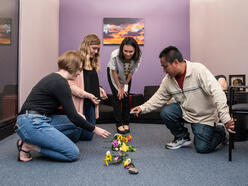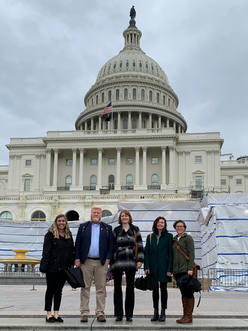The United Nations recognizes the 26th of June as the International Day in Support of Victims of Torture. Torture is a crime under international law, but it persists in many countries around the globe.
Many refugees and asylum-seekers have survived torture in their country of origin. The United States Office of Refugee Resettlement (ORR) estimates that as many as 44% of refugees, asylees, and asylum seekers are either primary or secondary survivors of torture.

The International Rescue Committee (IRC) in Arizona provides a specialized program to aid Survivors of Torture in both Phoenix and Tucson. The Survivors of Torture (SoT) program provides comprehensive case management that addresses the mental health, physical health, social, and legal needs of survivors. In fiscal year 2019, the IRC in Arizona served 113 survivors of torture through the program. These survivors come from many different nations in Africa, Latin America, the Middle East, and Asia.
Survivors often struggle to find stability and a sense of safety in their lives due to the fragile psychological state as a result of the long-lasting effects of torture. The distressed mental and emotional state of clients creates many consistent challenges. The coronavirus pandemic has amplified these mental health challenges by creating fear, isolation, economic instability, and loss.
In response, the IRC provides individual counseling and therapeutic services with licensed clinical therapists. Clinical progress towards stability and recovery can be slow and arduous, but small steps are taken regularly by the clients with the encouragement and support of the clinical team. Recreating a new sense of self and feeling of safety often brings with it a ripple effect in the clients’ life circumstances.

Due to the pandemic, IRC staff have moved to transition services to social distancing to best protect the health of clients. Comprehensive case management as well as therapeutic services are now offered via telephone or electronically. Staff are actively contacting survivors to assess their needs during the pandemic and provide assistance. Staff have delivered food boxes, face masks, and other basic items to survivors in need. The primary goal of this work is helping survivors to find stability during this challenging time.
In addition to direct client programs, staff from the survivors of torture program have worked to raise awareness in the broader community about the issue. In September 2019, the IRC in Arizona held its first multidisciplinary training for service providers and other community agencies to increase knowledge of best practices in serving survivors of torture. In March 2020, IRC in Arizona staff attended advocacy days in Washington DC, where they met with Senators and Representatives from both parties to advocate for survivors of torture.
A unique aspect of the survivors of torture program are social outings, which allow survivors to make social connections and explore the broader Arizona community in a safe and healthy way. Social outings have included trips to the Tucson Museum of Art, World Refugee Day celebrations, and the Phoenix Unknown festival. Outings like these have been postponed as a result of the pandemic, but the program continues to connect with survivors remotely.
In January 2020, a group of survivors of torture visited the Desert Botanical Garden in Phoenix, accompanied by Laura Rambikur, Clinical Therapist. Laura recalls how this visit was a moment of healing for one survivor of torture:

“I explored the garden with Agnes*, an asylum-seeker who, like so many of our clients, has survived unimaginable violence. We stopped in front of a Saguaro cactus. Together, we learned that the Saguaro, even after 10 years, may be less than 2 inches tall and that a Saguaro only begins to grow arms after 75 years. We stood gazing up in wonder at the giant before us which stood at least 25 feet with two arms extending up towards the sky.
After some time, I heard Agnes call my name softy and gesture. I followed her gesture to the lower part of the cactus. “Look there,” she said as she noticed a spot where it seemed as though the mighty giant before us had been wounded. “And there,” she said as she pointed out another hole that seemed to be burnt. As she pointed, a bird popped it’s head out of the hole, as if on cue. “It has suffered some pain don’t you think? How is that now, this plant has been injured in some way, and yet, look at how strong it is, despite the injuries. Not just strong, but it is also a home now to others.” I looked over at her and noticed tears in her eyes. I gently put my hand on her shoulder and replied, “It’s truly remarkable, isn’t it?” Agnes nodded and replied, “This beauty is God’s reminder of how I can be too, someday.””
Stories like Agnes’ demonstrate the importance of specialized programs for survivors of torture that create the space to heal. As Laura states: “I am humbled and amazed not just by the resiliency of the clients I serve, but in their ability to see the beauty of hope and the possibility of healing.”
*Agnes is a psuedonym used for client confidentiality.
